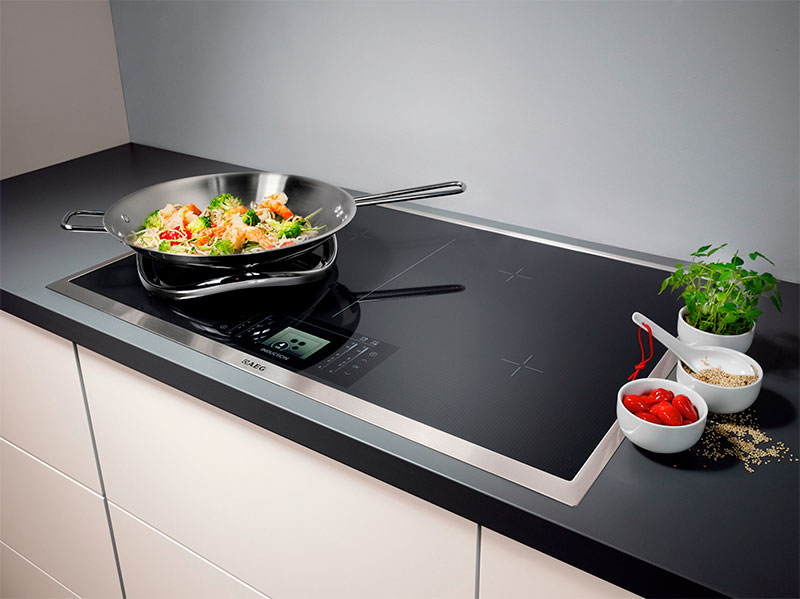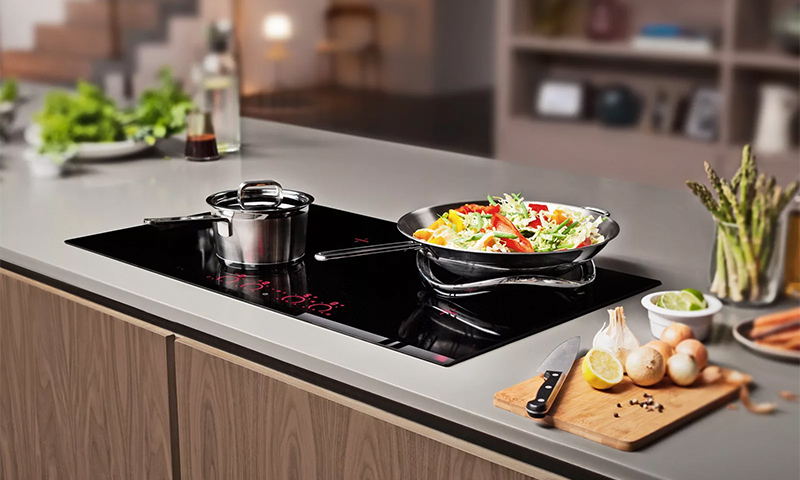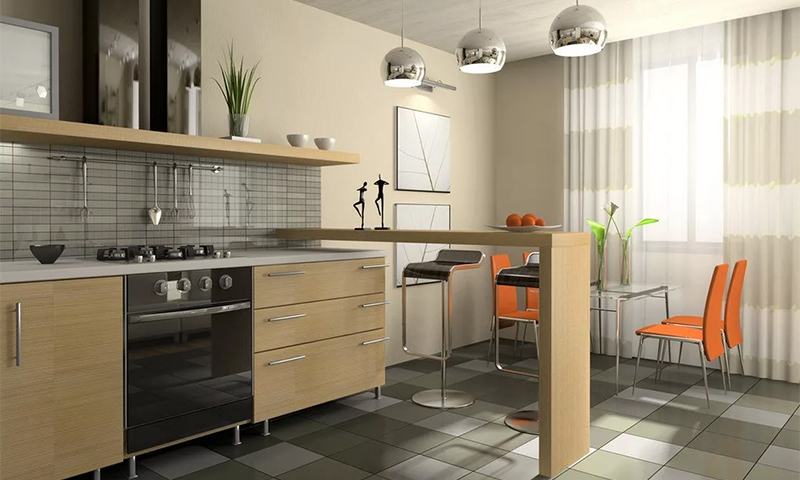Perhaps the interest and zeal of motorists in the selection of a car is equivalent to the interest of the majority of housewives who pick up an electric stove for the house. After all, thanks to the new acquisition, you can not only delight your loved ones with aromatic pastries and other mouth-watering dishes, but also save time. Correctly choose the stove that will become a faithful assistant in the kitchen, our article will help.

Content:
The best manufacturers of electric stoves - which company to choose
Most manufacturers of household appliances have in their range of electric stoves, so the market is saturated with products of many brands. It is difficult to get acquainted with the strengths and weaknesses of each of them.
To save time, we recommend paying attention to the brands that are recognized in the Russian market:
1. Bosch
2. Electrolux
3. Gorenje
4. Hansa
5. Beko
6. Darina
Learn about the features of specific models of some of the manufacturers can be in ranking of the best electric stoves according to customer reviews.
The design and principle of operation of electric stoves

Traditional electric stove - multifunctional electrical engineering, which includes:
- Cooktop;
- Oven;
- Dish storage box.
The principle of operation, as with most thermal appliances - electric current heats the heating element, which then gives off heat to the burner or the surrounding space (oven).
Types of electric stoves
Before buying an electric stove, one should be familiar with the varieties of models offered by manufacturers. Knowledge of the features, advantages and disadvantages of a certain type of equipment will relieve frustration after purchasing a new electric stove.
Plate with cast iron burners

The traditional stove with cast-iron burners is presented in two versions:
- With enameled steel surface;
- With stainless steel surface.
Most often, manufacturers cover the hull with white enamel, but you can purchase the equipment in black, brown, gray or beige. With proper care, the surface of the plate will retain its original appearance for a long time, it is important to timely remove splashes of grease and smudges. The main enemies of enamel are abrasives and metal grids for cleaning. In addition, the surface is prone to chipping - a frying pan accidentally dropped from the hands can damage the enamel.
Stainless steel surface looks more modern. It is more practical, resistant to shock, but "sinning" tendency to the appearance of divorce. Even drops of water leave stains and smudges on the stainless steel. The use of abrasives and hard sponges will destroy the cold shine of the metal - the surface of them will fade, becoming covered with a network of micro-scratches.
Cooking time and monthly electricity bills depend on the type of cast-iron burners installed on the stove, because they can be:
1. Standard - their average power level, access to the operating mode ten minutes after switching on.
2. Express burners - have great power. Exit to work mode takes seven minutes. The surface has a red mark in the center.
3. Automatic - equipped with a built-in sensor that determines the temperature of the dishes placed on the burner. After boiling the liquid power is reset. Marked in the center with a white mark.
Benefits:
- Low price;
- Unpretentiousness to the quality of the dishes (you can use pans and pans of any material, even dishes with a bottom that has minor irregularities);
- Electric oven evenly heats the air.
Disadvantages:
- The imbalance of dishes that have a bottom that is not round (for example, utteress);
- The danger in cooking dishes in a large-diameter tank is that it can tip over if it is strongly displaced relative to the center of the burner;
- Uneven heating of the bottom of the dish, which strongly protrudes beyond the burner, may affect the quality of the dishes;
- As a rule, the minimum set of functions is included in ovens of electric stoves with pig-iron rings. Few of them have convection and several baking modes;
- Pig-iron burners are difficult to clean from burned fat;
- Multistage heating (heating element, cast-iron hob, dishes) increases cooking time and energy costs;
- Slow cooling of the hotplate forces you to immediately remove the dishes with cooked food from the stove or turn off the appliances a few minutes before the dishes are ready.
Glass-ceramic plate

Slabs with a glass-ceramic surface are gradually squeezing out the models of the old model from the market, which are lost against the background of multifunctional, stylish equipment that surpasses them in almost all parameters.
The enamelled slab with clumsy cast-iron “pancakes” next to the glass-ceramic beauty, gleamingly held in glossy black glossy panel, does not bear any comparison.
You should not be afraid for the strength of a panel that is fragile at first sight - glass-ceramic is distinguished by a high degree of resistance to impacts and other unique qualities:
1. Low coefficient of thermal expansion (steel, this figure is 160 times higher). Therefore, the material can withstand sudden temperature fluctuations - if in the heating zone of the stove, where the temperature is more than 600 ° C, splash out ice water, this will not cause any harm to the surface.
2. Anisotropy - heat is conducted only “across the sheet”, “along the sheet” there is almost no conductivity. Therefore, the surface of the plate has a high temperature only in the heating zone, where the burner is located, and outside the zone the temperature does not exceed 50 ° C.
3. Maintains static load of 25 kg / cm². The surface without consequences will suffer a blow from fallen kitchen utensils weighing 1.8 kg from half a meter height.
The peculiarity of the stove is not only in a unique working surface - the burners are heated in a few seconds, speeding up the process of cooking.
Types of heating elements used in glass-ceramic plates:
1. Halogen - they are characterized by a bright red glow during operation. A spiral heater connected to a high power halogen lamp heats the burner almost instantly. You can quickly boil water or roast meat. The term of operation is short, significant electricity consumption.
2. Rapid - in the heater included a spiral heat-resistant alloy - nichrome. The output of the burner in working mode takes 10-12 seconds They are more economical and last longer. Most often used by manufacturers of electric stoves.
3. Hi Light - made in the form of a corrugated tape made of high-resistance alloy. The heating rate is 5-6 seconds. Provide effective and fast heating, but consume 25% more rapid heaters. They do not have the possibility of step adjustment, they work only in a certain mode.
Induction heaters are also installed in glass ceramic plates, but this variety deserves separate consideration.
Benefits:
- Silent operation;
- Spectacular appearance (the stove will fit perfectly into the kitchen with a modern design);
- Fast exit of a burner in an operating mode;
- Easy to clean - a smooth surface is much easier to clean;
- Dynamic adjustment of the degree of heating is similar to gas stoves (the surface heats up quickly and cools quickly);
- Ovens of glass-ceramic stoves, as a rule, have additional convenient devices and a greater number of modes;
- A wide range of models offered, differing in a set of options, allows you to choose the most suitable option.
Disadvantages:
- Higher price;
- Vulnerability to point punches (it is necessary to protect the surface from falling sharp objects);
- The liquid that escaped from the dishes does not linger on a flat surface and flows to the floor;
- Problematic cleaning of streaks from sugar-containing liquid;
- High requirements for used dishes - it must have a completely flat and clean bottom. Relief chips and soot affect the heating efficiency and can damage ceramics.
Induction cooker

The principle of operation of this type of plate has fundamental differences - in the process of cooking dishes, it’s not the working surface of the equipment that is heated, but the kitchenware itself.
"Magic" occurs as follows:
- Under the glass-ceramic panel is a coil with copper wire;
- After a current is applied to the coil, it generates an electromagnetic field that creates an induction current;
- The pan placed in the heating zone becomes a closed-loop current conductor;
- From the induction current produced by the stove, the electrons of the bottom of the dishes start moving;
- Moving electrons emit thermal energy that heats the dishes.
Benefits:
- High efficiency (about 90%) - all the energy is spent only on heating the bottom of the dishes, in all other types of stoves the heating of dishes takes from 30 to 60% of the heat, the rest of the resource is used to warm the environment;
- Safety - surface heating is possible only when dishes of a certain diameter are placed on it (if the kitchen knife or fork is accidentally dropped, the panel will not turn on);
- Simplicity in leaving - accidentally fallen particles of food and fat do not burn, it is easy to get rid of them, having wiped a surface;
- A large number of automatic programs that regulate the mode of operation.
Disadvantages:
- High price;
- A fan is installed in the plates, which produces a slight noise during operation;
- The quality of dishes for cooking of which they use wok or cauldron decreases, as only the bottom of the dishes warms up well;
- Do not cook in dishes made of aluminum or heat-resistant glass. Food can be prepared only in dishes with ferromagnetic properties (if kitchen utensils attract a magnet, it is suitable for use). However, for ordinary dishes, you can use special adapters, coasters with magnetic properties.
- See also: best induction cookers
Electric cooker selection options

When choosing an electric stove for the home, one should pay attention to the main technical characteristics, functionality of the oven and the availability of options that will make the work in the kitchen more comfortable.
Dimensions
When choosing a stove, it is necessary to take into account its dimensions, so that it will organically fit into the general line of kitchen furniture and household appliances.
The size and shape of the burners
They should correspond to or be as close as possible to the size of the bottom of the dishes that are regularly used. Buying a stove with a glass-ceramic surface, one should pay attention to the possibility of increasing the heating area (the so-called double-circuit burners).
Control
You can “control” the stove with the help of mechanical or electronic control. Mechanical rotary switches allow you to enable or disable the heating panel, set the desired temperature or mode of operation of the oven.
When electronic control commands are set using the buttons or the touch panel. A touch-sensitive cooker is a real find for housewives who fall into despair when they need to clean a stove. Smooth surfaces without handles are easy to keep clean. With electronic control, many modes are fully automated - you just need to select the desired program.
Functionality
An extended set of functions will help prepare complex dishes and create more comfortable working conditions in the kitchen:
- The indicator of heat - informs on not cooled parts of a plate;
- Liquid boiling control - turns off the heating element at the moment of boiling;
- Automatic recognition of the type of dishes - protects from heating empty or with a small amount of the contents of the container;
- Lights inside the oven - will help to monitor the process of cooking with the door closed;
- Automatic cooking - you just need to set the mass of the product and the number of the desired program. The equipment is turned off at a certain stage of preparation, and the dish comes on the residual heat;
- Convection - fan distribution of hot air inside the cabinet appetizing browns dishes, forming a crisp on them;
- Defrost function - allows you to defrost food for further preparation.
View of oven
The oven in the electric stove can be:
1. Static - equipped with upper and lower heating elements or a ring-shaped heating element that is located on the back wall of the oven.
2. Multifunctional - has from two to four heating elements and a fan that supports uniform heating. The cabinet with convection has more operating modes.
The way to clean the oven
This is an important parameter, which should pay attention to lovers of baking and roast, often using the oven.
Possible ways to self-cleaning the oven:
1. Catalytic - thanks to a special coating, fat deposits are oxidized at a high temperature and decompose into soot and liquid, which evaporates.
2. Pyrolytic - when exposed to high temperature (more than 450 ° C) all the pollution burns, turning into ashes, which must be removed.
Which electric stove to choose

You need to choose the equipment, focusing on your financial capabilities, kitchen design and degree of dedication to cooking - there is absolutely no need to overpay for a stove with a multifunctional oven to occasionally cook fried chicken in it.
Recommendations for choosing an electric cooker:
1. The traditional enameled stove with cast-iron burners is the best choice for arranging small-sized kitchen or cottage. This plate is the best option for a family, members who lead a measured lifestyle and rarely in a hurry.
2. A stainless steel stove with cast-iron hobs will fit in well with the kitchen with a modern interior. Ovens of models from stainless steel, as a rule, have expanded functionality. This stove will please fans to experiment with different dishes.
3. The ceramic stove will decorate the kitchen. It can be recommended to families in which they like to cook national dishes that require the use of dishes with a specific form (uatyatnitsa, wok, cauldron). Uniform heating of thick-walled containers has a positive effect on the quality and taste of the dish.
4. Induction hob will significantly save the household time for cooking lunch and dinner. This is a suitable option for families where there are small children, and household members are busy with work, study and in a hurry all the time. It can be recommended to fans of cooking fried dishes - chops, steaks, pancakes, etc.
How much are electric cookers

The cost of technology depends on the brand, the type of surface and type of burners, technical characteristics and degree of saturation with all sorts of options.
Check out the estimated prices for the electric stove with four burners:
1. Enameled with cast iron burners - from 6.6 to 25 thousand rubles.
2. Stainless with cast iron burners - from 14.4 to 35 thousand rubles.
3. Glass-ceramic - from 14.5 to 90 thousand rubles.
4. Induction - from 40 to 190 thousand rubles.
It will be interesting to friends too










